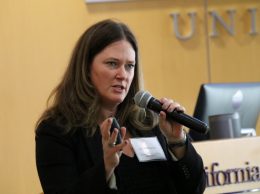Workforce trends challenge for tri-county employers

Vlad Vaiman
By Vlad Vaiman
To formulate and implement a meaningful talent management strategy in an organization, its top leaders need to understand current workforce trends. These include a rapidly aging population, increased workplace diversity, significant skill deficiencies and employees’ changing attitudes.
The rapidly aging U.S. population is felt in virtually all occupations. Even though the overall number of workers has increased in the past decade, the fastest growing segment was workers aged 45 to 64. In 2015, employees aged 40 and over have exceeded the number of those under 40 for the first time ever.
Moreover, the teenage workforce is 33 percent smaller than in it was 2001, while the number of workers aged 55 and older increased 40 percent. Employees aged 55 and over now make up 25 percent of the workforce in 210 occupations, while in 2014 it was only 86 occupations. Many organizations have already begun struggling with ways to control costs and will have to find new ways to attract, retain and prepare the youth labor force.
The types of diversity that are most significant and growing the fastest in the U.S. labor force are gender and racial. Forty-nine percent of jobs were held by women in 2014, as opposed to 48 percent in 2001. This 1 percent increase does not seem like much, but it translates into 4.9 million more female workers since 2001, compared to just 2.2 million additional male workers over the same period.
The workforce also reflects the fact that the U.S. population is more racially and ethnically diverse than ever before. Latinos and Asians held 13 percent and 5 percent of jobs, respectively, up from 11 percent and 4 percent in 2001. At the same time, Caucasian employees lost their share of total employment, dropping to 69 percent from 72 percent in 2001.
The greater diversity of the labor force challenges employers to create practices that ensure they fully utilize the talents and skills and celebrate the value of all employees, irrespective of their national, racial or ethnic origin. Managing such diversity involves many different activities and touches upon many perspectives in staffing, work design, training perspective, compensation and other areas.
Workforce skills deficiency is perhaps the most important trend. Serious technological and organizational changes over the past few years have shifted the kinds of skills required of employees in the global economy. Most organizations are now looking for superior skills and educational achievements beyond the traditional undergraduate degree, which has become a basic requirement for many jobs today. Some companies are advertising positions for which not one but two graduate degrees are required – a generalized MBA and a master’s degree in a specialized area such as finance, natural sciences or engineering. Whether or not these requirements are justified, it is becoming challenging for candidates to satisfy these demands. This means that there is a gap between skills needed by organizations and skills offered by the labor market and this gap is here to stay. That is why 48 percent of U.S. employers cite finding qualified talent to staff skilled positions as their biggest concern. They report that the main challenge is to find people qualified in science, technology, engineering and mathematics fields.
The last key trend is changing employee attitudes. Out of 8,000 adults surveyed in 2015, 71 percent of those currently employed are actively seeking or are open to a new job. Fifty-eight percent look for new job opportunities at least monthly and 18 percent daily. This must be very disconcerting to the employers who spent time and money to recruit, hire and train these employees.
The study demonstrates that the younger and more educated employees are, the more often they look for other career opportunities. This means that the all-important psychological contract — a feeling of mutual loyalty, respect, and commitment between employers and employees — is totally out-of-balance and needs immediate attention on the part of organizational leadership.
To stay competitive and address the issues of high-value jobs and resource allocation, organizations are compelled to pay more attention to all these trends while designing meaningful talent management strategies.
• Vlad Vaiman is a professor and associate dean of the California Lutheran University School of Management.












